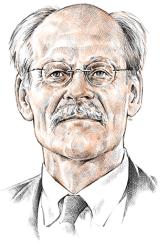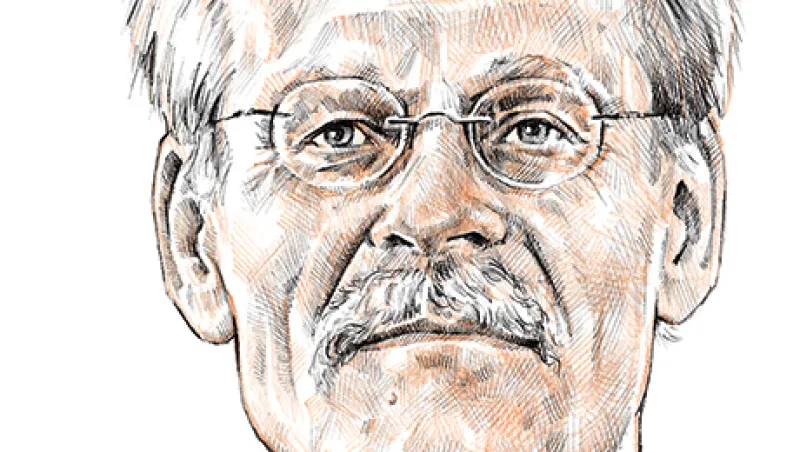In 1992, Sweden faced its darkest financial hour since the Great Depression. A collapsing real estate bubble combined with a currency crisis threatened to bring down six of the nation’s seven largest banks. Economic output plummeted, and unemployment soared. In microcosm it foreshadowed the calamity that would hit the U.S. and much of Europe in 2008.
Stefan Ingves, then a Finance Ministry economist in his early 40s, was drafted to take charge of the cleanup as head of Sweden’s Bank Support Authority. Working in collaboration with the central bank and local regulators, he quickly set about implementing a rescue plan based on a muscular recapitalization of the main banks and an aggressive program of asset sales. In parallel the government passed a series of structural reforms to promote growth. The economy quickly rebounded, and the so-called Swedish model has been hailed as a textbook guide on how to restore a crisis-stricken banking sector to health.
Today, Ingves is governor of Sveriges Riksbank, the Swedish central bank, and he is bringing his experience to bear at the global level: He chairs the Basel Committee on Banking Supervision, a post he took up in 2011. The committee brings together regulators from 27 major economies to set global standards, and its toughened rules have dictated many of the key regulatory reforms that countries around the world have adopted since the crisis.

Ingves recognizes the need for greater subtlety and variety in the committee’s approach. The greatest lesson of the crisis, as he sees it, is to “always worry about leverage.” No matter what its precise origins are, each crisis “always means somehow you create an overlevered part of society,” he says, and “some of it almost always ends up in the banking sector.” But no single risk metric is a panacea. “In a complex world the issue is to find a balance between all the different measures we’re looking at,” he says. “All of that is quite complex, and I don’t think any of that can be replaced by a leverage ratio only.”
Banks bristle about the multiplicity of requirements, saying they are costly and act as a brake on lending, but Ingves is unapologetic. “I think there’s a need to be a bit more intrusive compared with how regulators have been in the past,” he says. Banks, in his view, need to accept the consequences of their outsize impact on society, an impact that is growing in line with financial complexity: “Given that difficulties in the financial sector produce very large negative externalities for society as a whole, you should never expect to be allowed to do whatever you want when you are in the financial sector.”
But does a more complex world really call for more-complex rules? Complexity has become something of a dirty word in regulatory circles recently, with many now calling for a more simple, less fussily risk-weighted approach to supervision of the financial system. In an influential paper delivered at the Federal Reserve Bank of Kansas City’s annual gathering at Jackson Hole, Wyoming, last year, Andrew Haldane, executive director for financial stability at the Bank of England, said that “the type of complex regulation developed over recent decades might not just be costly and cumbersome but suboptimal for crisis control. In financial regulation less may be more.”
Ingves has some sympathy with this line; indeed, in a July paper the Basel committee explicitly sought suggestions on how to improve the simplicity of the regulatory architecture. But he contends that the aim of regulators must be to pursue neither simplicity nor complexity at all cost but to strike a balance among rules that are sufficiently specific to take proper account of the complexity of the financial sector and sufficiently simple to be easily enforceable.
Ever the student of complexity, Ingves declines to say what the biggest threat to global financial stability is today. But he stresses two keys to avoiding — or tempering — future crises. Regulators have to stay vigilant so they can continue to understand the different evolutionary processes that financial sectors go through. And they have to remain constant against the natural laxity that accompanies the passage of time.
“After a while, when you put in place new rules and the good times come back, people tend to forget,” says Ingves. “So it’s important to complete the work program, however you set it up.”
Illustration by Bernd Schifferdecker
The Legacy of Lehman: A Look at the World 5 Years After the Financial Crisis
- 5 Years After Lehman, No One Can Declare the Financial System Safe
- Europe's Banks, Slow to Restructure, Pose a Systemic Risk Today
- Emerging Markets Face Mounting Challenges as Global Liquidity Dries Up
- As the Fed Readies to Taper, Is the World Ready for Higher U.S. Rates?
- China Exploits Crisis, Positions Renminbi as Potential Rival to Dollar







